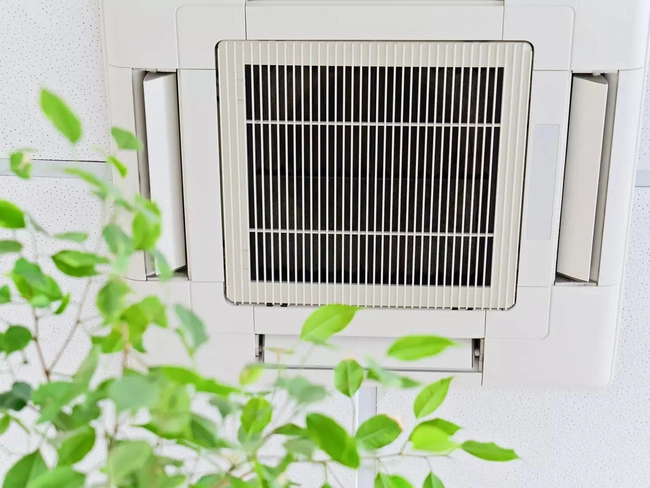
As offices reopen, there’s an important question to ask: Is bad indoor air dulling your brain?
How healthy is the air in your workplace?
It’s a question many of us are now asking to protect ourselves from COVID-19. But indoor air quality is also something we should be talking about long after the pandemic ends. Because not only can the quality of your workplace air influence the number of sick days you take each year, but it may even affect how well your brain works in the office.
A new study shows that poor indoor air quality is associated with subtle impairments in a number of cognitive functions, including our ability to concentrate and process information. The study, published in Environmental Research Letters, tracked 302 office workers in commercial buildings in six countries — the United States, Britain, China, India, Mexico and Thailand — for 12 months.
The scientists used monitors to measure ventilation and indoor air quality in the buildings, including levels of fine particulate matter, which includes dust and minuscule particles from smoking, cleaning products and outdoor air pollution that seeps into the building. The workers were asked to use an app to take regular cognitive tests during the workday. The tests included simple math problems, as well as a tricky color and word brain teaser called the Stroop test, in which a word like “blue” or “purple” is printed in green or red ink.
(The test asks you to name the color of the ink, but our brains want to read the word instead. You can try the Stroop test yourself online at faculty.washington.edu/chudler/words.html.)
The study found that the office workers in buildings with the poorest indoor air quality tended to perform worse on the brain teasers. Although the effect wasn’t drastic, the findings add to a growing body of evidence suggesting that the air we breathe affects brain health.
“This study looked at how several factors in the indoor environment have an immediate impact on our cognitive function and performance,” said Joseph Allen, director of the Harvard Healthy Buildings program and the study’s senior author. “This study shows that the air you’re breathing at your desk at that moment has an impact on how well you think.”
In the past, air-quality control in buildings has been mostly focused on energy efficiency and comfort, with little consideration given to infection control or overall worker health. But the pandemic has prompted many workplaces to take a closer look at indoor air quality. The good news is that many of the changes being made to prevent the spread of COVID-19 are the same improvements that need to be made to improve the overall air quality linked with cognitive function and worker productivity.
“There is a newfound appreciation for how much the indoor environment influences our health,” Allen said. “Healthy buildings,” he said, should not just be thought of as “something we do during COVID or a crisis.”
He added: “It has to be the new normal, not the exception, going forward.”
In general, you want to hear that your building has upgraded its ventilation filters to at least a MERV 11 but preferably a MERV 13, which is an indicator of filtration efficiency. You also want to know if building managers have taken steps to increase outdoor air or added portable air cleaners to the space. Be wary if someone tells you the building’s ventilation system can’t be improved or that they’re using a new, unproven technology.
Allen notes that even adding a portable air cleaner with a HEPA filter to the center of the room can make a meaningful difference in offices with less-efficient ventilation systems. The key to choosing an air cleaner is to pick the right device for the size of the room. Allen advises that for a typical work space, choose an air cleaner with a clean-air delivery rate, or CADR, of 300 for every 500 square feet of floor space — which provides about the equivalent of changing the air in the room every 15 minutes.
Allen, co-author of a new book, “Healthy Buildings: How Indoor Spaces Drive Performance and Productivity,” said he has been encouraged to see more businesses and individuals taking indoor air quality more seriously as a result of the pandemic. Recently, he saw a job posting at a major company advertising for a “head of healthy buildings” in the company’s global real estate division.
“It tells you that serious companies are changing how they approach their buildings, and they’re not thinking about this as a one-off during COVID,” Allen said.
Although some of the technical details around air quality can be confusing, don’t be intimidated. You don’t have to be a ventilation expert to determine if the precautions your employer is taking are adequate to keep you safer during the pandemic and well into the future.
“The pressure is coming from employees, parents of kids in school, teachers — there’s a heightened level of awareness and expertise,” Allen said. “How many people were talking about MERV 13 filters prior to the pandemic? This knowledge that our indoor spaces have been underperforming is not going away. I think people are rightly frustrated and fed up with it.”

